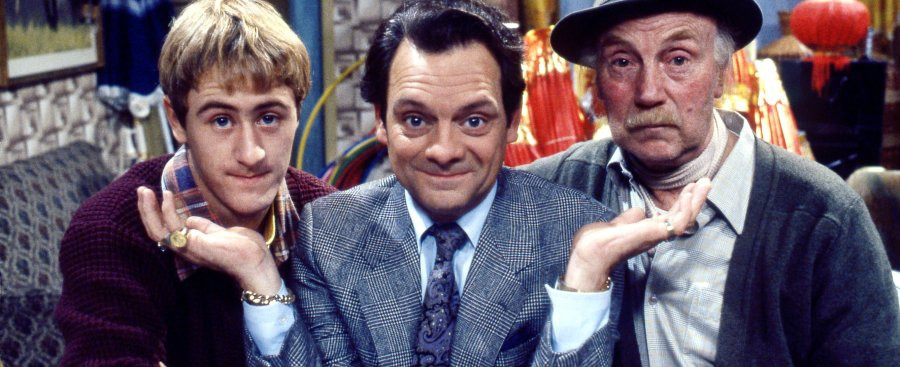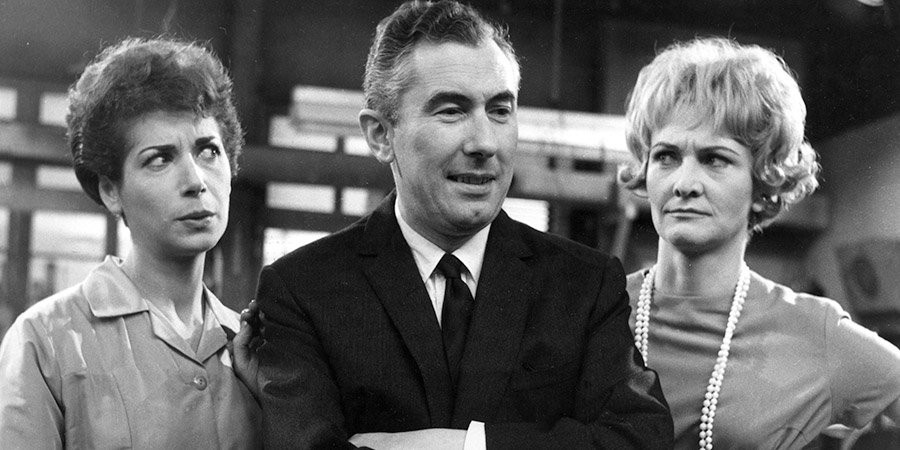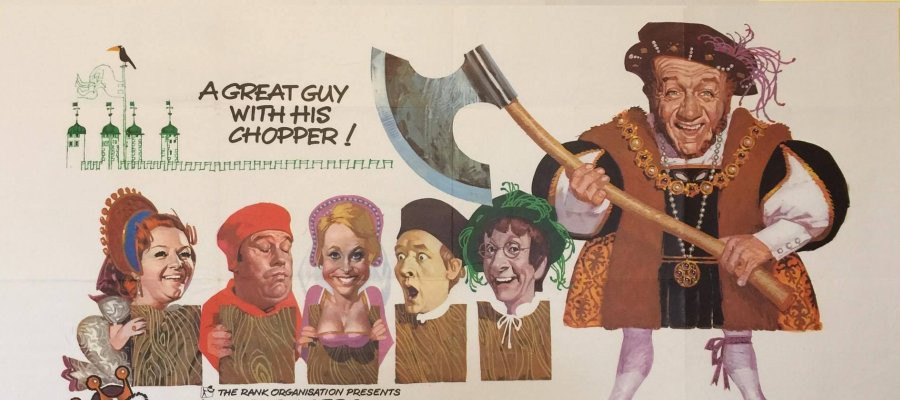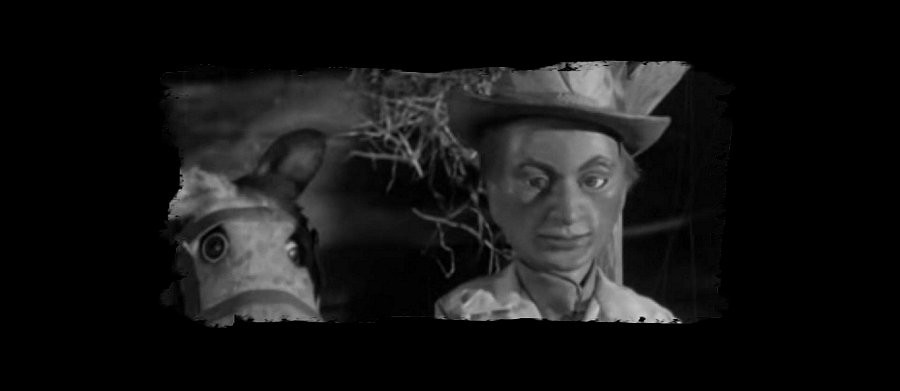
Carry On Cleo
Review: John Winterson Richards
It is difficult to exaggerate the importance of Carry On Cleo in the history of the series. It is arguably the defining Carry On film. It was the first in which the core team really found their groove, the first in which writer Talbot Rothwell, who had experimented a bit in his two initial attempts, Carry On Cabby and Carry On Jack, finally perfected the style and tone that is now associated with Carry On. It began a run of successful films that are now remembered as classics before a definite decline in quality that set in rapidly in the early Seventies. This first of these classics is also the best in the opinion of many Carry On fans, and there are few who would not number it at least in their Top Three. It is probably the best remembered, the one that springs to mind when Carry On is mentioned, among the general public too. One of its most groanworthy jokes, "borrowed" with their permission from Frank Muir and Denis Norden, was voted the funniest line in film history in a Sky Movies poll. You probably know the one.*

It is less historical satire than a satire of one particular historical film, the 1963 Cleopatra with Elizabeth Taylor, Richard Burton, and Rex Harrison. Contrary to legend, Cleopatra was emphatically not a box office flop. It was a huge popular success: its financial failure was due to production costs spiralling out of control, so that even the huge audience figures were never going to be enough to make a profit, especially since the studio had to shut down all other productions so that all its overheads had been covered by that one film rather than spread between several. This epic business disaster actually added to the legend of Cleopatra, which still loomed large in the public consciousness the following year when Carry On Cleo came out. The satire was in fact able to use some of the costumes and props from the film it was satirising, which had initially been filmed at Pinewood Studios, the Carry On base, before the production moved to Italy.
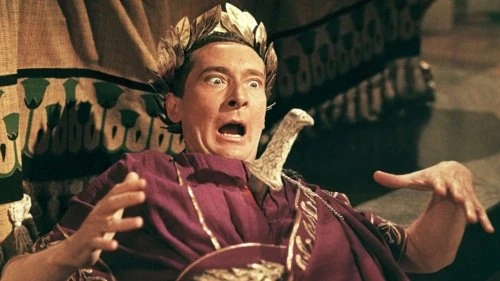
The Carry On regulars were out in force for what was itself something of a prestige project, at least by Carry On standards. It took a sort of twisted genius to think of Kenneth Williams as obvious for Julius Caesar and Sid James for Mark Antony, but they do catch aspects of their historical characters more serious productions miss. Joan Sims is Caesar's nagging wife Calpurnia (this is a Carry On film, so all wives are by definition nagging) and Charles Hawtrey is her father - who was not called Seneca in real life as he is here and who is definitely not to be confused with the philosopher of that name who lived over a century later. Jim Dale graduates from supporting roles to the heroic lead while Kenneth Connor is his somewhat less heroic friend who gets involved in an amusing case of mistaken identity, or should that be mistaken personality?
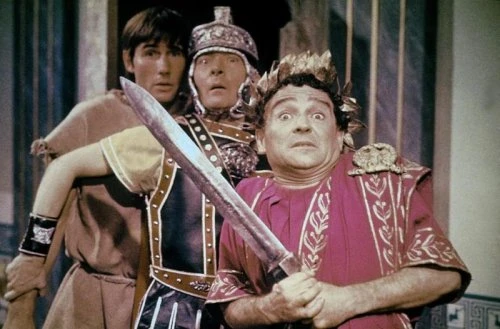
Familiar faces in the supporting cast include Jon Pertwee as a soothsayer, Julie Stevens (not long off season two of The Avengers) as Dale's love interest, Sheila Hancock as Connor's predictably nagging wife (again, this is a Carry On film), Percy Herbert curiously unbilled as a guard, Peter Gilmore as a Galley Master (good training for his later role in The Onedin Line), Warren Mitchell as either Marcus or Spencius, Norman Mitchell (no relation) as a disgruntled pleb, Sally Douglas as "Antony's dusky maiden" (blame IMDb), Wanda Ventham as "pretty bidder" (IMDb again), Victor Maddern as a "Sergeant Major" (IMDb, probably meaning Centurion or Tesserarius), and Francis de Wolff, a well-known character actor of the type who would usually be cast in a serious historical epic, as a senior naval officer called Agrippa - presumably a reference to the future admiral, played in Cleopatra by the middle aged Andrew Keir in spite of the historical Agrippa being a teenager at the time of Caesar's Alexandrian War.
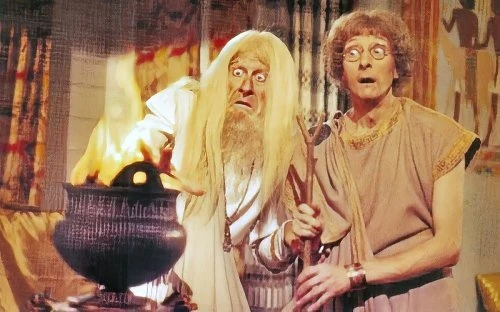
However, the film is dominated by Amanda Barrie as the eponymous Cleo, combining wide eyed innocence with a brutal ruthless streak. One suspects she was closer to the essence of the historical Cleopatra VII than Taylor, even if both women were a lot easier on the eye than the actual Egyptian Queen, who seems to have relied on her character rather than her looks. It is surprising that Barrie was not bigger in feature films after her huge success in this role.
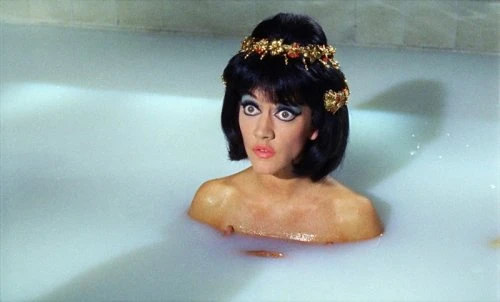
She was certainly prominent in the publicity for Carry On Cleo, much of which referenced the publicity for the Taylor version deliberately. So did another satire of Cleopatra that came out around that time, the cartoon album Asterix and Cleopatra, which later had two film adaptations of its own, one animated and one live action. This is worth mentioning because both projects shared a similar approach to humour and history.
Although the Carry On is more risqué than the cartoon, and indeed marks the point where the series became more adult in its innuendo, it shares with the Asterix books a childish delight with word play, especially in the names - Connor's character is apparently named Pod mainly so that his wife can be called Senna. That said, one cannot imagine the place name Cockium in an Asterix book, let alone the remark that it was a bit of a mouthful. Yet at the same time it retains a strange innocence elsewhere: the dialogue sometimes switches between English and cod Latin for no other reason than to be silly. Thus Caesar's legions match to the sound of "Sinister, dexter, sinister, dexter..." while on another occasion a surprised Mark Antony exclaims "Blimus" as only Sid James can.
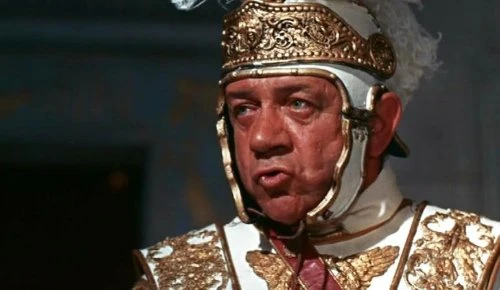
The "historical" Carry On films were never that historical, satirising early Sixties Britain more than the Late Roman Republic. "You've never had it so good," says Julius Caesar, quoting Harold Macmillan who lived two thousand years later. So there is no point in the IMDb calling it a "goof" when "Boadicea" is mentioned despite her belonging in the next Century (contemporary with the aforementioned Seneca, to whom she may have owed money, leading to the regrettable events for which she is famous) - but, of course, if you want to be picky, she was actually Boudicca and based in Norfolk, never, as far as we know, going anywhere near Carlisle where Carry On Cleo places her for no reason other than to suggest somewhere far away. The point is that this is a Carry On film and is not meant to be taken seriously. Thus, not only are the Celts, in reality an advanced culture in many respects, presented as anachronistic cave-men (except with Anglo-Saxon names from six hundred years after Cleopatra's time) but one of them refers to his mother in law being eaten by a brontosaurus. Any child can tell you why this is inaccurate - apart from anything else everyone knows that the brontosaurus was vegetarian.
It may therefore be something of a surprise to notice small bits of actual historical truth sneaking in from time to time, probably, but not certainly, by accident. Despite looking nothing like him, Sid James gives us a strangely credible Mark Antony, who was basically a charmer and a chancer as he is presented here. Some ancient sources suggest he may have at least been aware of the plot against his friend and patron Caesar. The scene in which a mutinous Senate is persuaded to vote Caesar's way by the mere presence of the "Champion Gladiator of Rome" definitely has its real life equivalents.
Above all one can see Carry On Cleo itself as part of the continuation of an ancient tradition that dates all the way back to the Romans and beyond. It was customary in Classical theatre to put on a short farce after the conclusion of a great tragedy so that the audience could be sent home in a good mood, and the farce often referenced the tragedy directly. In this case Carry On Cleo was made intentionally as the farce that followed the tragedy, in every sense, that was the Taylor-Burton Cleopatra. Plautus and Terence, the great Fathers of Roman Comedy would undoubtedly have recognised Carry On Cleo as such, and its tone and style would have been familiar to them, not least in its open vulgarity. Only Rothwell could say to what extent, if any, he was copying them deliberately, but, either way, one feels they would have appreciated a fellow professional at work and smiled at the result.
*” Infamy! Infamy! They’ve all got it in-for-me!”
Published on March 31st, 2025. Written by John Winterson Richards for Television Heaven.


